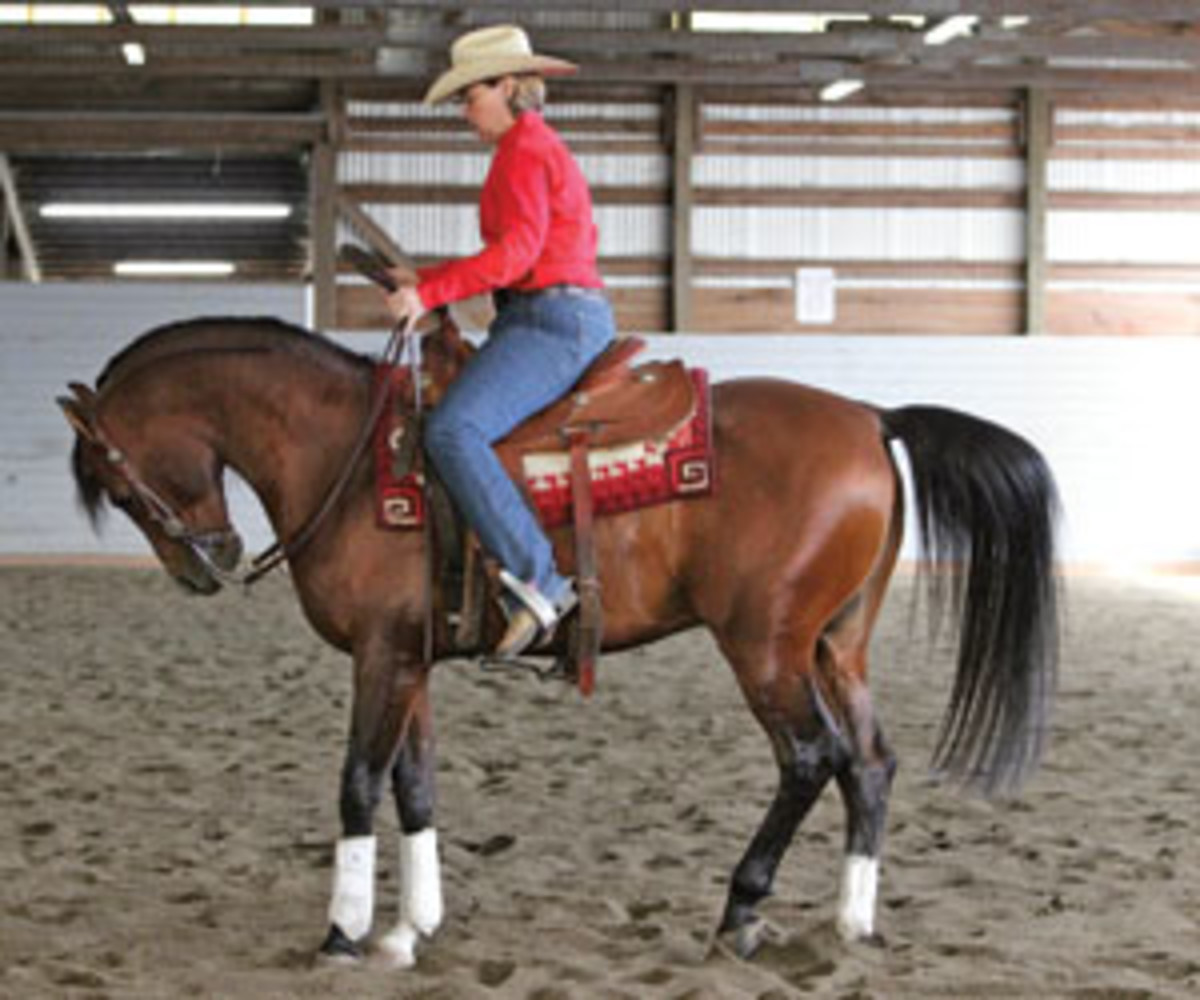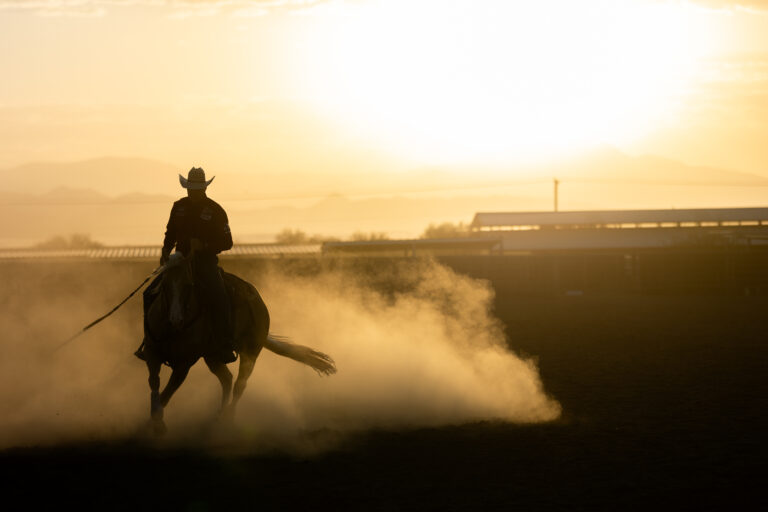Q I’ve been to a few shows where the judges have asked for a turn on the forehand in Western horsemanship patterns. This is typically a maneuver associated with English equitation, so it’s not something I’ve spent much time mastering. What are your tips for practicing a forehand turn, so my horse and I are prepared if the judges call for the maneuver again?

Callie Penfold, Georgia
A Speaking as a judge, I’ve occasionally required a forehand turn in a Western horsemanship pattern (Western equitation in Arabian classes). It’s when a horse basically plants his front end and moves his hind end around his front feet.
The biggest mistake I see made, outside basic technique errors, concerns direction. When I ask for a forehand turn to the left, the horse’s head should move to the left. All too often, riders believe incorrectly that a turn on the forehand to the left means the horse’s hips should move toward the left. So, before you can correctly practice a forehand turn, it’s important to understand the direction the turn should go. In a judged class, it doesn’t matter how correct your forehand turn is if you go the wrong way. The easiest way to remember is: A left turn is always the same direction, you’re just changing the pivot point of the horse from back end to front end.
Before you start, your horse should be proficient at sidepassing. (Search sidepass at HorseandRider.com for training tips for that maneuver.) The ability to move laterally, as in the sidepass, is a cornerstone for moving up to turns on the forehand.
Here, I’m riding one-handed. I figure I might as well start one-handed (because my horse is proficient at sidepassing while I ride with one hand), and I can go to two-handed riding if necessary. If you’re most comfortable riding two-handed, it’s fine to start that way; just remember that it might not be allowed in the show pen. You can graduate to using one hand.

My horse is outfitted in a shanked bit that he’s comfortable with. Choose whichever bit your horse works best in for teaching this maneuver, whether it’s a snaffle or a bit with a shank.
I initiate the forehand turn to the left (my horse’s head is moving to the left; his hips are moving toward the right) by using my calf, heel, and spur (if necessary) to put pressure on his left side, behind the cinch, in the area of the horse’s mid-ribcage. Using pressure in this area of my horse’s barrel clearly states, “Move your hindquarters to the right, away from my left leg.” He’s familiar with this pressure from when we’ve worked on sidepassing. I keep my right leg out of his way, giving him somewhere to go when I ask him to move away from pressure.
To keep him from going forward when I put this pressure on his body, I maintain contact with his mouth. My left hand holds the reins and is up, back a little, and slightly to the left. This hand position helps contain forward motion and keeps my horse’s front end as still as possible for the duration of the turn. Most horses will try to sidepass at this point. You’ll need to use your right leg forward of the cinch to keep his shoulder from sidepassing to the right. After a while, your horse will figure out his new “trick” and just move his hind end around as you ask for it. Don’t ever expect your horse to plant his front end as still as you might see some horses that plant a pivot foot behind. A horse will naturally want to pick his front feet up and replace them with each step, but the goal is to keep his front feet together in a very small area of only a few measurable feet.
I’m careful to be quiet and slow with my cues—this can be a perplexing maneuver for a horse to grasp. But it’s not impossible; it’s just a matter of isolating the movements of certain parts. Most horses find this type of turn to be much easier to accomplish than a hind-end pivot turn. Here’s why: I think you can get a horse to do a correct pivot on the forehand because he’s not as stiff in the hind end as in the front end. A good hind-end pivot requires very free shoulders, which isn’t a trait all horses have.

I work slowly, step by step, to move the horse’s hindquarters around his front end. If I run into problems manipulating his hindquarters, I go back to sidepassing. Try this visual: I remind my students to pretend that they’ve put their horse’s front feet in a tire, and to then move the back end around it. This helps them focus on keeping the front end as still as possible.
LaRae Powell specializes in training Arabians and Half-Arabians from her Silver Aspen Ranch in Auburn, Washington. Her open, amateur, and youth program has produced more than 250 national and reserve champions, many of those in reining competition.






